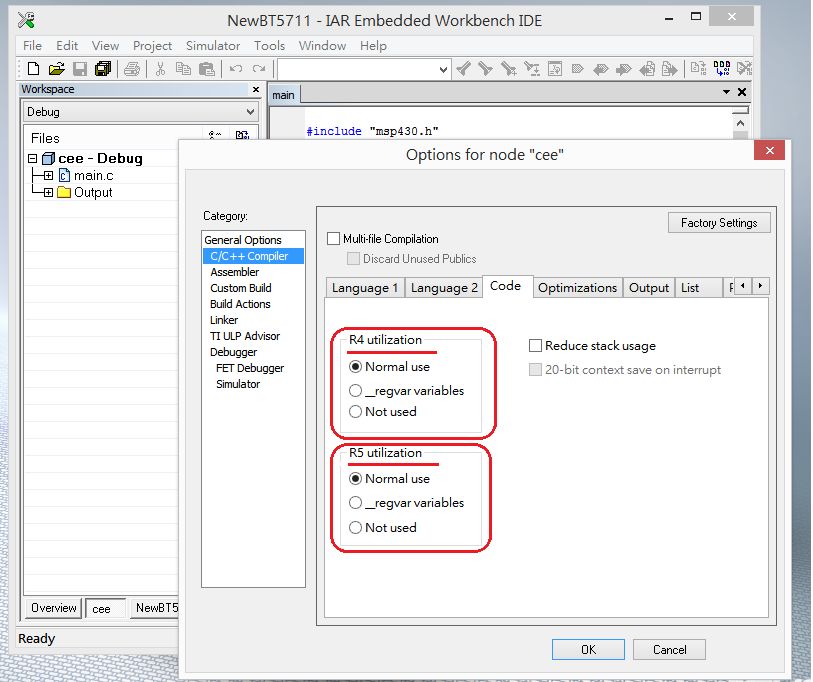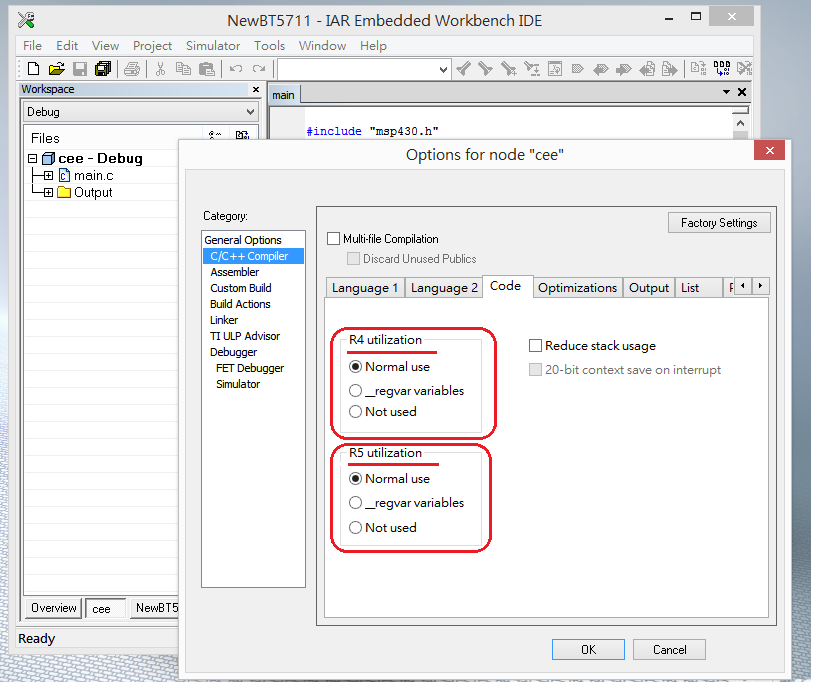IRQ's should be fast and quick as to not interfere with other IRQ's
Fine-tuned Asm code will help to make them short and sweet.
And I never liked how C handles TAIV registers, a visual mess.
And I don't like to have a offset jump limit, so I use a branch look-up table instead of a jmp table.
NAME TA0_IRQ ; module name
#include "msp430.h" ; #define controlled include file
PUBLIC TIMER0_CCR0 ; make the main label visible outside this module
COMMON INTVEC(1)
ORG TIMER0_A0_VECTOR
DC16 TIMER0_CCR0 ; set irq vector for ccr0
ORG TIMER0_A1_VECTOR
DC16 TIMER0_A1 ; set irq vector for all other
RSEG CODE ; place program in 'CODE' segment
TIMER0_A1
mov.w &TAIV, R4 ; R4 is never used by C, so make it the default IRQ scratch register
mov.w T0_A1_T(R4), PC ; Branch lookup Table, this avoids the ±128 jmp limit
resrvd reti
T0_A1_T DC16 resrvd, TIMER0_CCR1, TIMER0_CCR2, resrvd, resrvd, TIMER0_TA, resrvd, resrvd
TIMER0_CCR0
// CCR0 your code here
reti
TIMER0_CCR1
// CCR1 your code here
reti
TIMER0_CCR2
// CCR2 your code here
reti
TIMER0_TA
// OverFlow your code here
reti
END
Mixing C and Assembler with the MSP430: SLAA140
I attached IRQ templates for PORT 1 & 2 and TA0 and TA1
IAR, Project> Add Files...
add: extern public_name (to the main/calling module)



